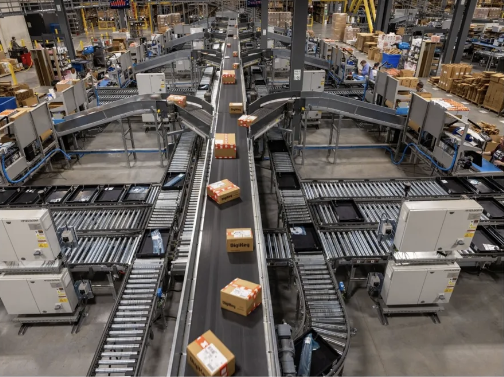A Year in Review: The Canadian Electronics Industry in 2024 – Electronic Products & Technology
As 2024 draws to a close, Canada’s electronics industry continues to delight, surprise and reinforce its position as a key player in the global technology ecosystem. From semiconductor advancements to groundbreaking innovations in medical devices, the past 12 months have been marked by significant achievements, collaborations and milestones that reflect the resilience and ingenuity of Canadian companies and institutions. This recap takes a personalized look at the highlights that shaped the year.
- Reshoring Semiconductors
One of the most prominent themes of 2024 was the ongoing momentum in reshoring semiconductor production to Canada. With the growing need for a secure and resilient supply chain, the industry saw increased investments in domestic manufacturing capacity. Organizations like CMC Microsystems and Technum Quebec played a pivotal role in facilitating this shift.
At the 2024 Canadian Semiconductor Symposium, held in Markham, ON, industry leaders emphasized the importance of local talent development and collaboration between government, academia, and private enterprises. Gordon Harling, CEO of CMC Microsystems, spoke extensively on the need to bridge the gap between R&D and production to strengthen Canada’s foothold in semiconductor fabrication.

- Medtech Innovation
Canada’s expertise in medical electronics was a standout in 2024, with two key companies gaining industry recognition. Toronto-based Able Innovations introduced their ALTA Platform, a robotic system designed to automate patient transfers in hospital environments. The ALTA Platform, which integrates advanced sensing and mechatronics, has been hailed as a game-changer in reducing strain on healthcare professionals and enhancing patient safety.
Meanwhile, Pontosense Inc., also based in Toronto, pushed the boundaries of intelligent wireless sensor technology. Their non-contact sensors, which monitor vital signs such as heart and respiratory rates, made waves in the medical device market. Pontosense’s technology reflects a growing demand for remote patient monitoring solutions that combine reliability, accuracy, and ease of integration.
- Advanced Materials
Quebec-based NanoIntegris Technologies Inc. showcased its leadership in the nanomaterials space by launching new graphene and semiconducting carbon nanotube (CNT) product lines in 2024. These advanced materials hold immense potential in applications ranging from next-generation electronics to energy storage solutions.
NanoIntegris’ advancements underscore Canada’s role as an innovator in foundational technologies that power electronic devices. The new product lines were widely celebrated as crucial building blocks for future breakthroughs in flexible electronics, displays, and semiconductors.

Source: Getty
- Features Highlights
EP&T’s feature story coverage throughout 2024 highlighted several key advancements and industry shifts:
- OVIN accelerates Ontario’s position in auto design sector: The Ontario Vehicle Innovation Network (OVIN) played a crucial role in positioning Ontario as a global leader in automotive design and technology. By fostering collaborations between automakers, startups, and research institutions, OVIN has accelerated the development of next-generation electric and autonomous vehicles, solidifying Canada’s role in the future of transportation.
- Untethering the development of processors with AI: Artificial intelligence took center stage in 2024 with its transformative impact on processor design and development. Toronto-based Untether AI unveiled its AI-driven tools and frameworks which have enabled engineers to optimize performance, energy efficiency, and scalability in semiconductor processors. This breakthrough is particularly significant as demand for advanced computing solutions continues to surge across industries.
- Semiconductors and AI intersect: The convergence of semiconductors and artificial intelligence emerged as a defining trend. As explained by Raymond Chik, PhD and consultant with DRC Enterprises in Toronto, Canadian companies and research institutions explored new frontiers in AI chip design, paving the way for faster, smarter, and more efficient hardware solutions. This intersection has enabled the growth of applications ranging from edge computing to AI-powered IoT devices.
- DeepSight has vision for future of augmented reality: Montreal-based DeepSight gained recognition for its pioneering work in augmented reality (AR). By leveraging cutting-edge imaging technology and AR frameworks, DeepSight introduced solutions that blend digital and physical worlds seamlessly. Their innovations have transformative applications in fields such as healthcare, education, and industrial training, positioning Canada at the forefront of AR advancements.

Source: DigiKey
- Addressing Supply Chain
Supply chain issues continued to play a highly visible role within the electronics industry in 2024. EP&T’s October print edition featured several stories that explored innovative solutions and strategies for navigating these ongoing challenges:
- Automating component sourcing: An article supplied by DigiKey details how the advances in automation tools have streamlined the process of sourcing components, reducing delays and improving efficiency for manufacturers. These tools enable businesses to adapt quickly to market fluctuations and supply shortages.
- Perks and pitfalls of friendshoring: Mouser Electronics delivered a feature story on how friendshoring has emerged as an OEM strategy for building relationships with geopolitically aligned partners to diversify their supply chains. This feature explored the benefits and challenges of relocating supply chains closer to home.
- Rapid prototyping paves the way for more responsive projects: By leveraging rapid prototyping technologies, companies have accelerated product development cycles. An article supplied by Tria Americas suggests this approach has allowed for greater flexibility in responding to shifting market demands and supply chain disruptions.
- Using AI to protect your supply chains: A story authored by SAP indicates that artificial intelligence has become a critical tool for mitigating risks and enhancing visibility in supply chain operations. AI-driven solutions help companies predict disruptions, optimize inventory management, and strengthen resilience.
- Keeping REEs in a circular supply chain: The focus on sustainability has intensified efforts to keep rare earth elements (REEs) within a circular supply chain. This feature story from Component Sense highlighted innovations in recycling and reusing REEs to reduce dependency on scarce resources.
- Mitigating risks against supply chain disruptions: From a CEM’s perspective, Avnan lets us know that companies are adopting proactive strategies to identify and address vulnerabilities in their supply chains. From diversifying suppliers to investing in digital tools, this article examined methods for building more robust and reliable networks.

The cross-border collaboration between Canadian and U.S. semiconductor-centered R&D, prototyping, and manufacturing industries continues to focus on ways to connect to expand opportunities as C2MI (MiQro Innovation Collaborative Centre), based in Bromont, Québec, Canada, and NY CREATES, based in Albany, NY, build upon their partnership that began in early 2024.
- Collaboration Across Borders
The Northeast Semiconductor Manufacturing Corridor (NSMC) continued to gain traction throughout 2024, strengthening ties between Canada and the northeastern United States. This cross-border initiative aims to create a robust and interconnected semiconductor supply chain by leveraging regional expertise, infrastructure, and talent.
Canada’s role in the NSMC highlights its strategic position as a gateway to North American markets. The collaboration also aligns with the broader trend of reshoring and building local capacity in semiconductor production, an industry imperative amid global disruptions.
Looking Ahead to 2025
While 2024 has been a year of milestones, challenges remain on the horizon—including workforce shortages, increasing competition, and sustainability goals. However, with its growing ecosystem of semiconductor innovators, medical device leaders, and resilient supply chain partners, Canada is well-positioned to thrive in the coming years.
The successes of 2024 reflect a shared commitment to innovation, collaboration, and progress. Whether in the form of cutting-edge technologies or robust partnerships, the Canadian electronics industry continues to inspire confidence and optimism for the future.




